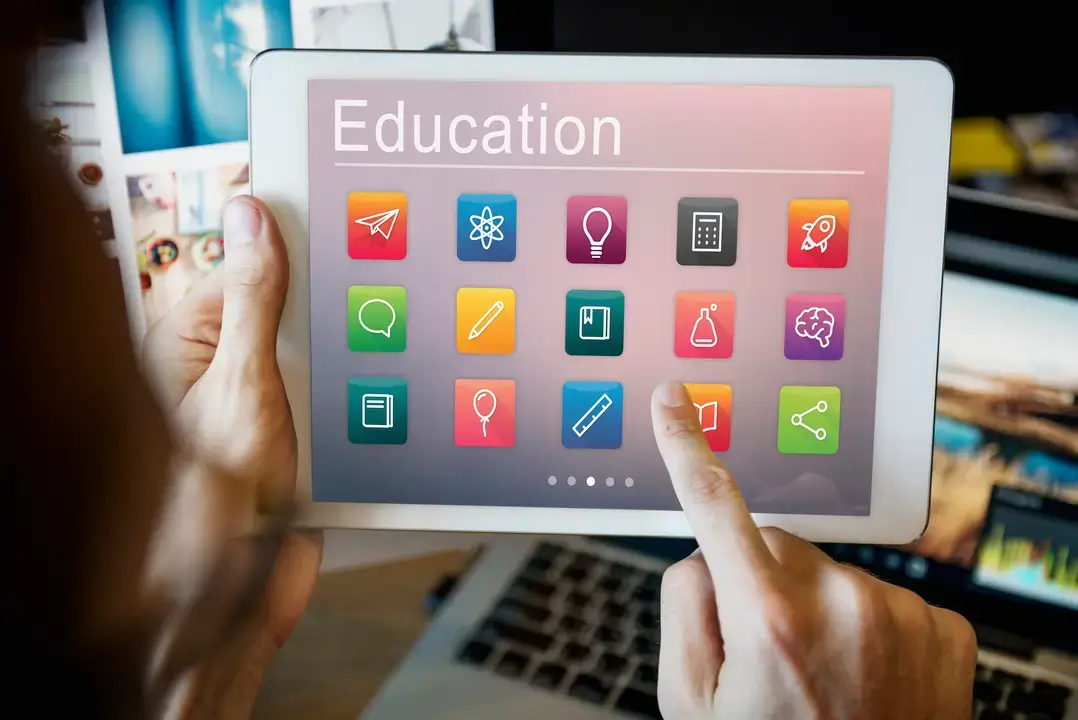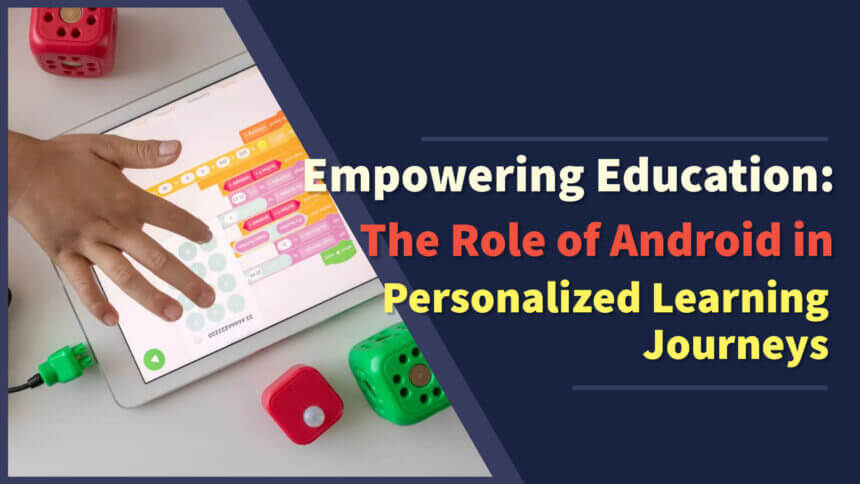Mobile technology really has revolutionized education, and there are lots of ways that Android phones in particular are reshaping how we learn. Phones go beyond being just devices and instead, become essential tools that break the traditional confines of education. Read on to find out more.
The Rise of Mobile Learning
Android phones have changed how we learn by making education more flexible and accessible. Students now have a powerful learning tool in their pockets, allowing them to explore and learn beyond traditional classrooms. This flexibility integrates learning into daily life, promoting a culture of curiosity and continuous knowledge acquisition. Carrying an Android phone is like having a portable classroom, empowering students to learn at their own pace and nurturing a genuine passion for acquiring knowledge. Whether on a bus ride home or a quiet moment in a park, these devices turn every space into an opportunity for learning. In essence, Android phones have created a mobile classroom, blurring the lines between formal education and personal discovery, making learning a dynamic and ever-present aspect of life.
Motorola Moto G Stylus 5G | 2021 | 2-Day Battery | Unlocked | Made for US 4/128GB | 48MP Camera | Cosmic Emerald
Interactive Learning Apps
With their many interactive learning apps, androids are a game changer in education. These apps aren’t like regular textbooks; they’re exciting and dynamic. For example, language learning apps use cool features like recognizing speech, and there are also apps with interactive science simulations. These examples show how educational apps on Android devices can really transform the way we learn. They make learning more engaging and hands-on. Plus, students can explore subjects in a way that feels like play, making education more enjoyable. This shift from traditional textbooks to interactive apps is a big leap forward in making learning accessible and fun for everyone.


Digital Textbooks
The adoption of digital textbooks on Android devices represents a pivotal shift in educational resources. Portable and interactive, digital textbooks empower students to engage more deeply with subjects through multimedia elements, hyperlinks, and real-time updates. This transition lightens the physical load of backpacks and also aligns with sustainable practices, reducing the environmental impact associated with traditional textbook production.
Accessibility and Inclusivity
Android phones play a crucial role in addressing accessibility challenges within education. Their versatility accommodates a range of accessibility features, including text-to-speech functions and customizable font sizes. This inclusivity ensures that educational content is accessible to all students, irrespective of their learning needs or linguistic backgrounds.
Personalized Learning Journeys
The adaptability of Android phones enables educators to facilitate personalized learning experiences. Learning apps on these devices can adjust difficulty levels, provide targeted feedback, and track progress. This personalization encourages a learning environment where each student can progress at their own pace, reinforcing understanding and retention of educational content.
Challenges and Solutions
While the integration of Android phones into education brings lots of benefits, challenges must be acknowledged. Concerns about screen time, potential distractions, and the digital divide need collaborative efforts from educators, policymakers, and technology developers to develop strategies that ensure the advantages of mobile learning are accessible to all students.
Professional Development for Educators
To get the most out of using Android phones in education, it’s crucial to provide continuous training for teachers. Giving educators the skills to use mobile technology effectively improves how well educational programs work. The training should be hands-on, dealing with real-life situations, and making sure teachers are ready to handle the changing world of mobile learning. That way, teachers can confidently integrate Android phones into their teaching, making lessons more engaging and relevant for students. Ongoing training ensures that educators stay updated on the latest advancements, enabling them to create a dynamic and effective learning environment. It’s about empowering teachers with the know-how to use Android phones as valuable tools in education, making the learning experience better for everyone involved.
Gamification of Learning
Adding fun elements, like crossword puzzles, to educational apps, a technique known as gamification brings exciting possibilities. When educational games, including crosswords, are incorporated into Android phones, learning becomes enjoyable and turns lessons into captivating challenges. This boosts motivation but also strengthens critical thinking and problem-solving skills. Students find themselves immersed in an interactive and entertaining learning environment that transforms education into an engaging experience. Gamification boosts students’ positive attitude toward learning, as they associate education with fun and excitement. As Android phones become tools for both education and play, they create a balanced and dynamic learning atmosphere.
Adaptive Learning Algorithms
Future educational apps on Android phones may leverage adaptive learning algorithms powered by artificial intelligence. These algorithms can analyze a student’s learning patterns, strengths, and areas of improvement to tailor content in real time. This personalized approach ensures that each student receives targeted support, maximizing their learning potential.
Smart Classrooms and Connectivity
The concept of smart classrooms, which are enabled by things like Android devices is really gaining traction. These classrooms leverage technology to create interactive and connected learning environments. From synchronized digital whiteboards to real-time collaborative projects facilitated by Android devices, there are exciting possibilities for seamless connectivity in education in the future.
Collaborative Learning Platforms
Apps made for group activities let students work on projects, share stuff, and talk together. This prepares them for jobs where teamwork is crucial. Android phones also help create global learning communities. Students can connect with others worldwide, share ideas, work on projects together, and learn from different points of view. This prepares them for a world where understanding different cultures and working with people from all over is important. In a nutshell, Android phones make learning more social and connected, getting students ready for a future where working together globally is the norm.
Future Trends in Educational Technology
Looking ahead is vital as we use Android phones in education now. Future innovations like augmented reality (AR) and AI learning assistants can make learning even better. AR applications, for instance, can give students immersive learning experiences by showing complex ideas in 3D, making things clearer and more interesting. On the other hand, AI-powered learning assistants are like a new frontier in education technology. They can give personalized support to students, adapting to how each student learns. This could change how we learn by tailoring what we study to fit each person’s preferences. So, by thinking about what’s coming next, we can make using Android phones in education an even more exciting and effective experience. As we anticipate these future trends, it’s essential to stay open to the possibilities they bring. Embracing augmented reality and AI learning assistants can lead to a more inclusive, engaging, and personalized educational journey for students using Android phones.
Ethical Considerations in Educational Technology
As technology becomes a bigger part of education, it’s important to focus on ethics. Teachers and tech developers need to deal with things like keeping data private, ensuring digital well-being, and making sure everyone has fair access. Finding the right balance between using technology to help in education and using it responsibly is really important for shaping how Android phones will be used in the future of education. We need to make sure that while we’re making the most of what technology can offer for learning, we’re also being ethical and fair in how we use it. This way, the use of Android phones in education can be both beneficial and responsible, creating a positive and equal learning environment for everyone involved.
Students, teachers, parents, and tech developers all working together is really important to keep Android phones as helpful tools for learning.










